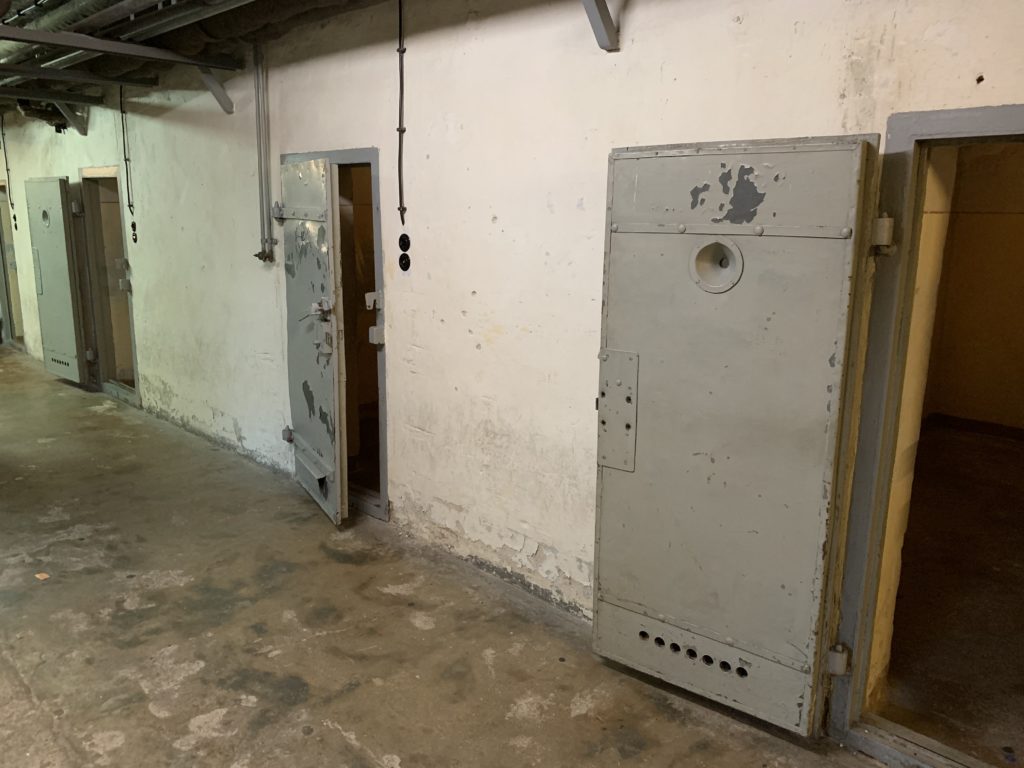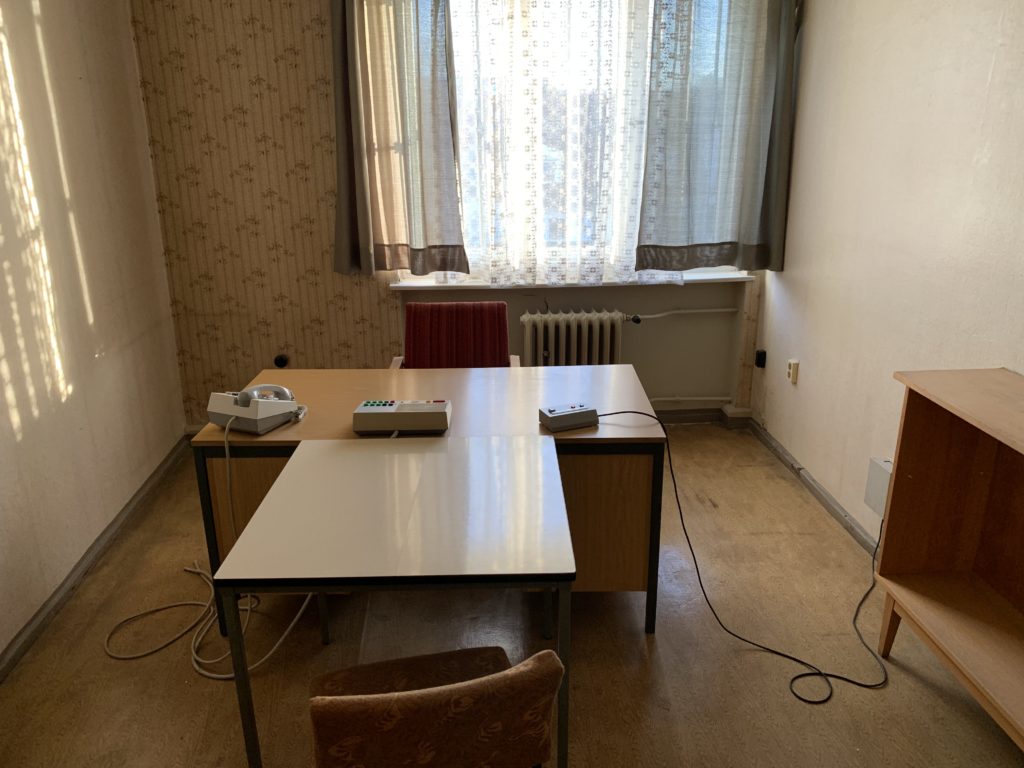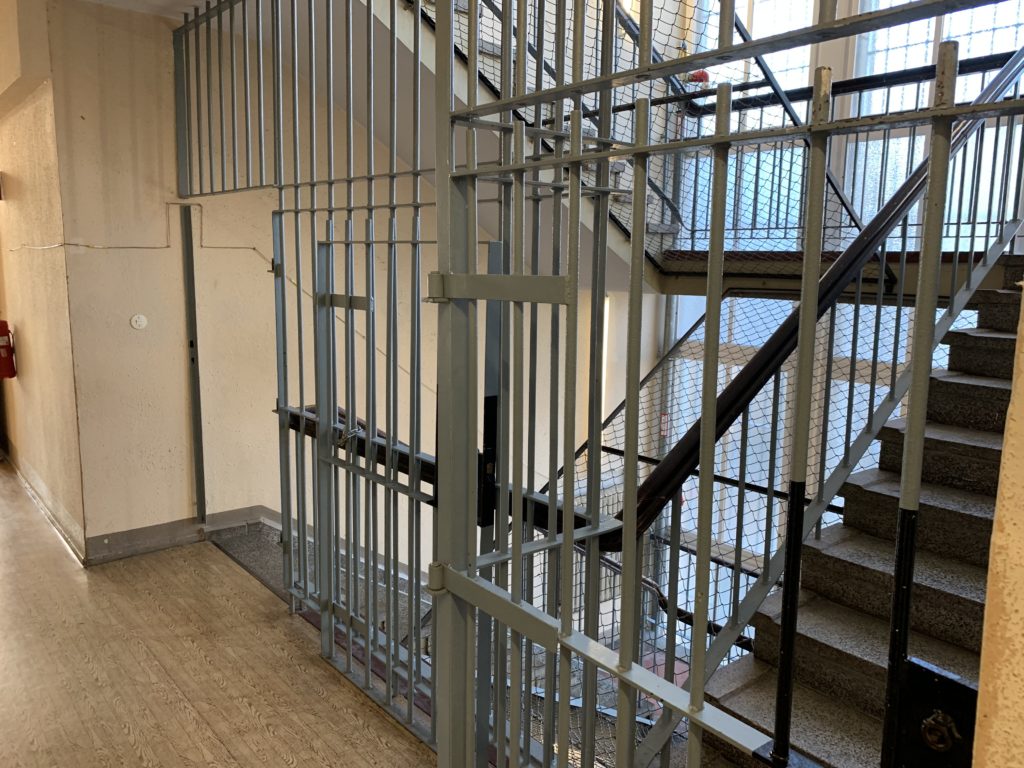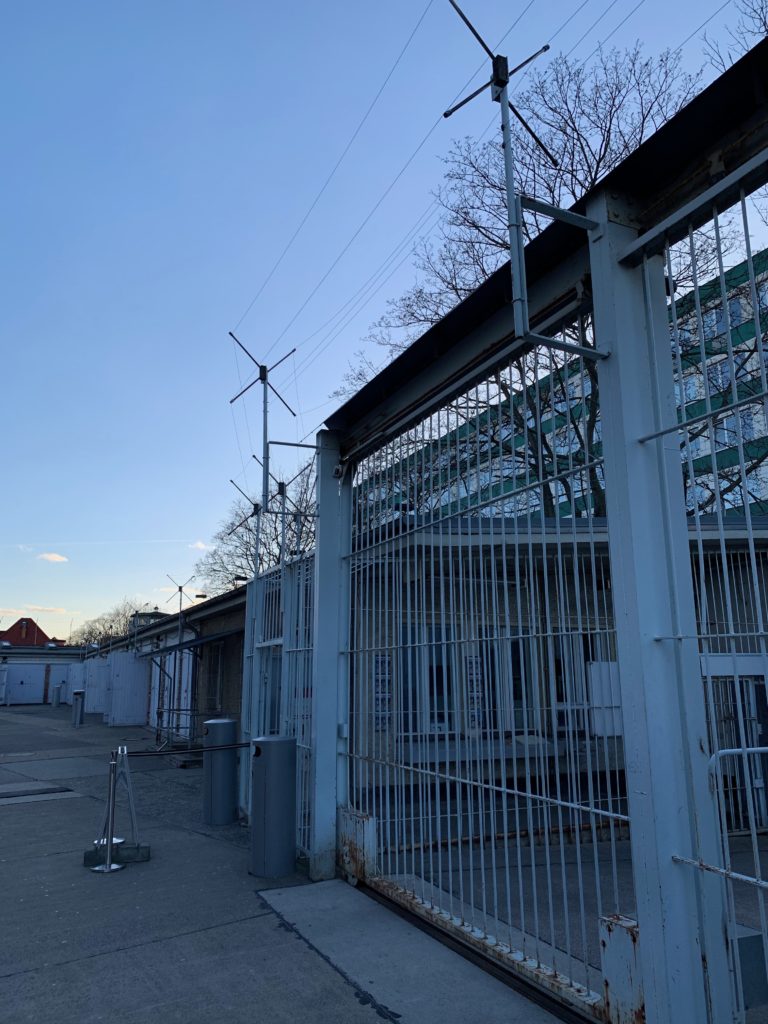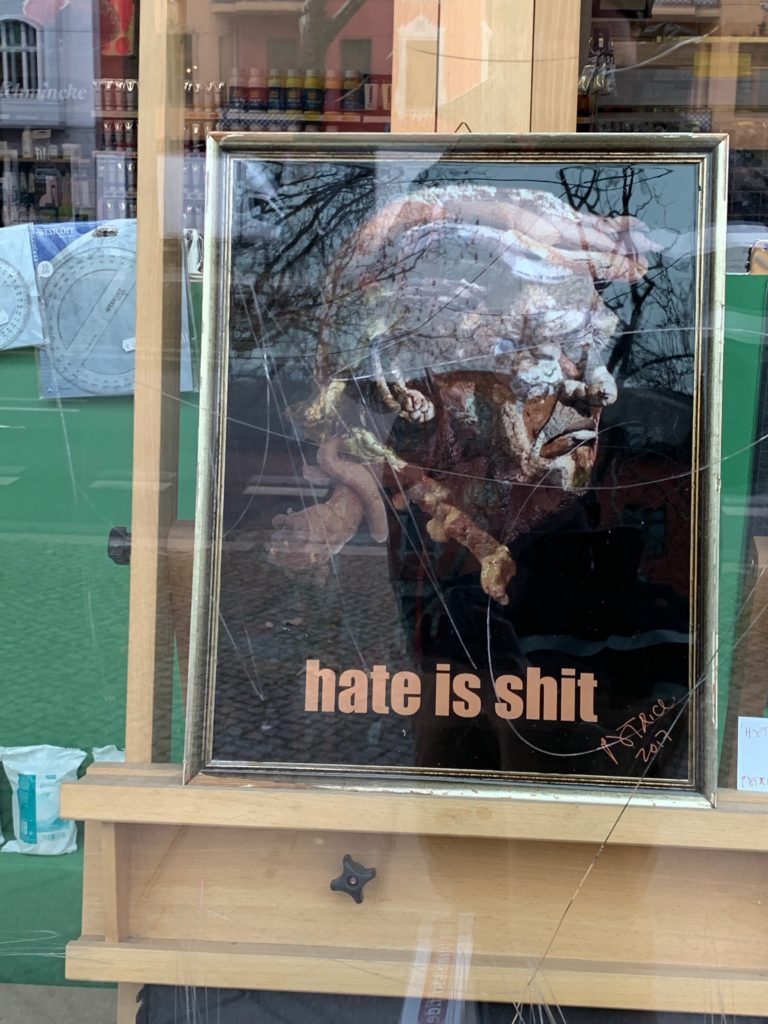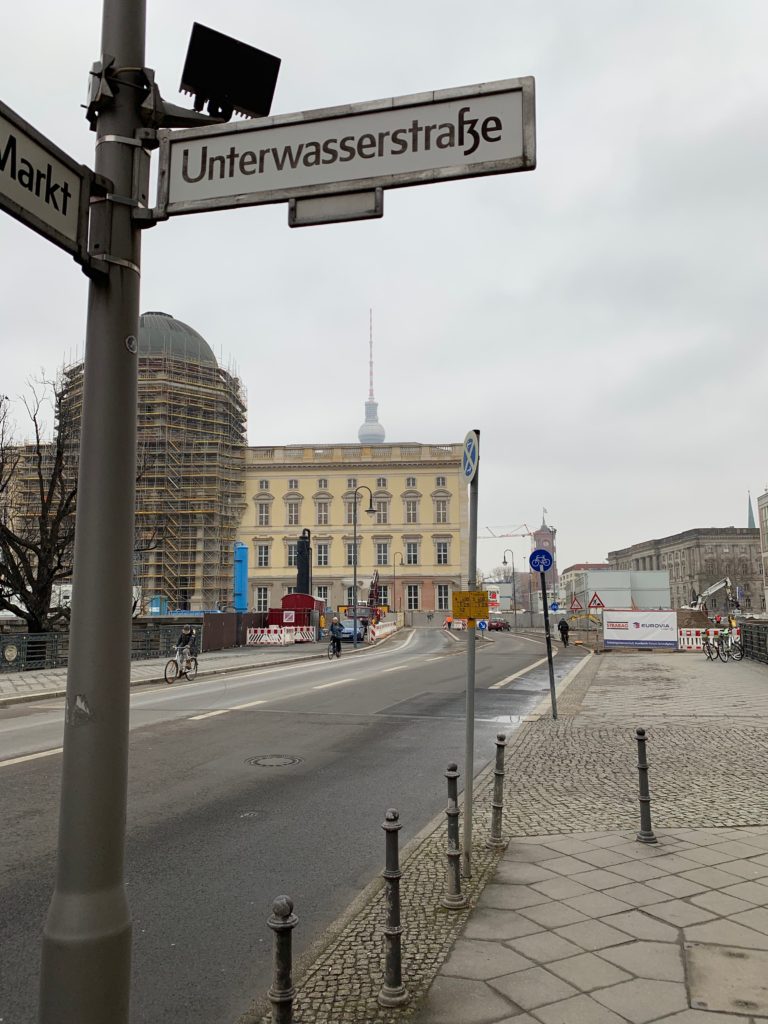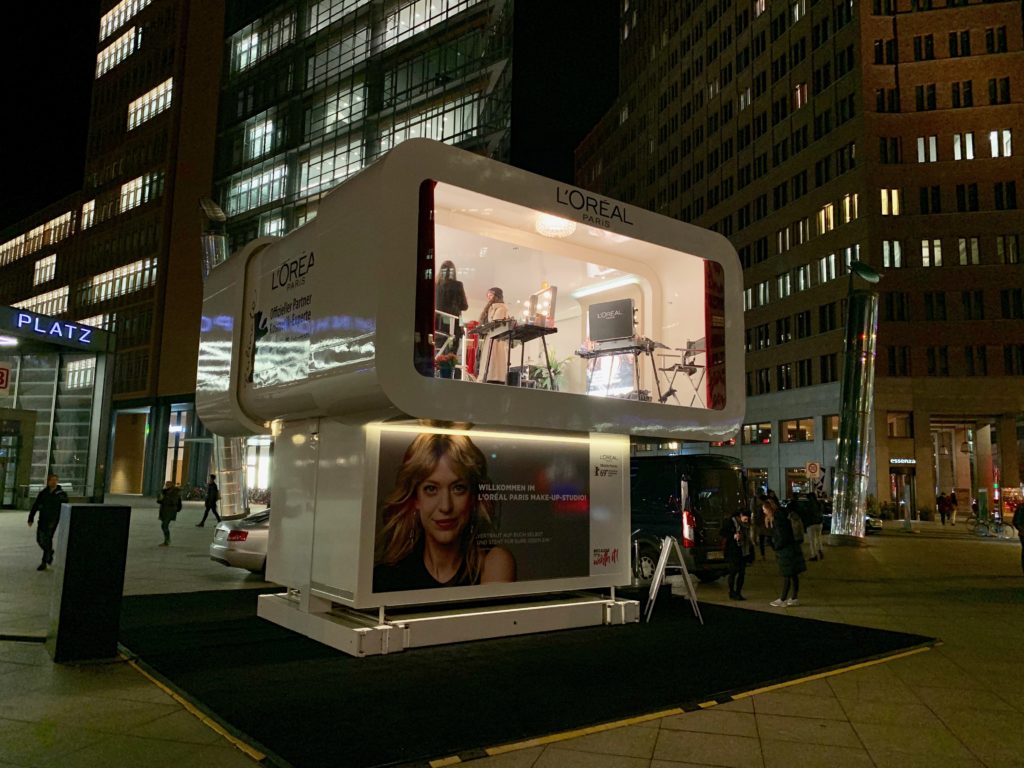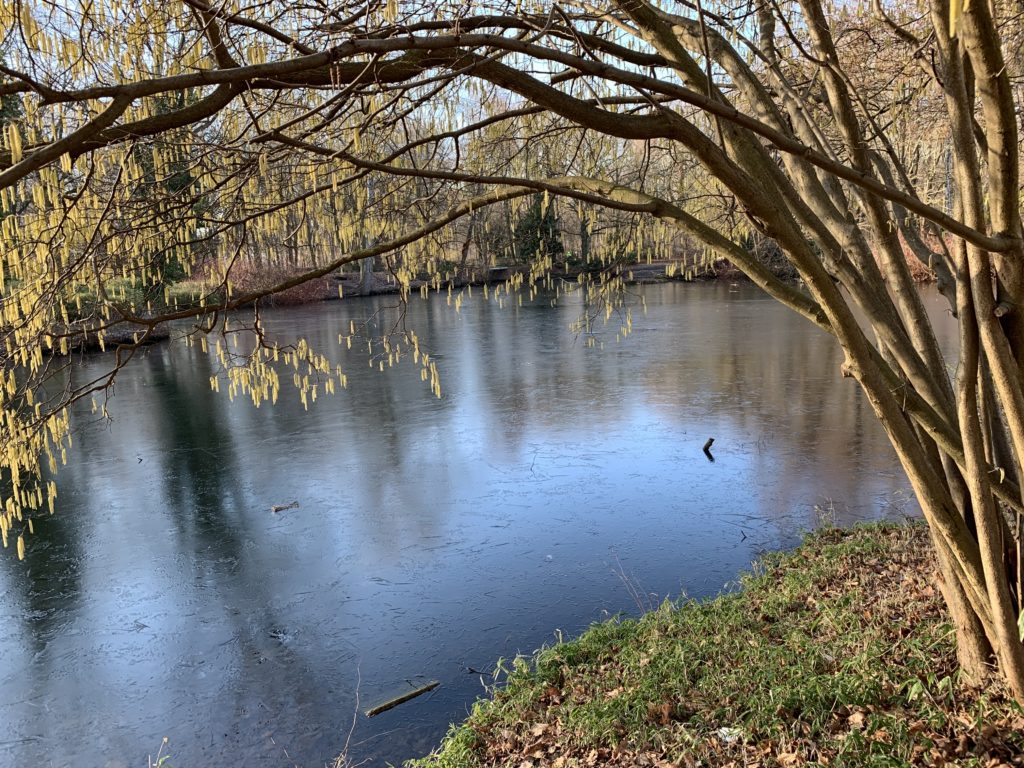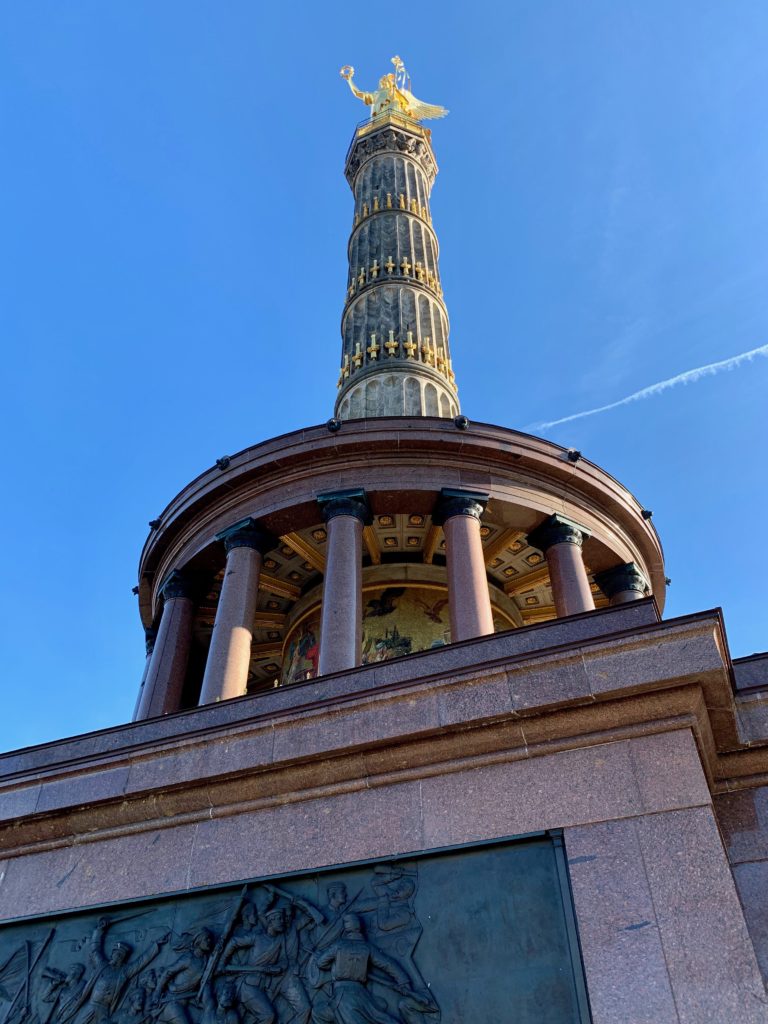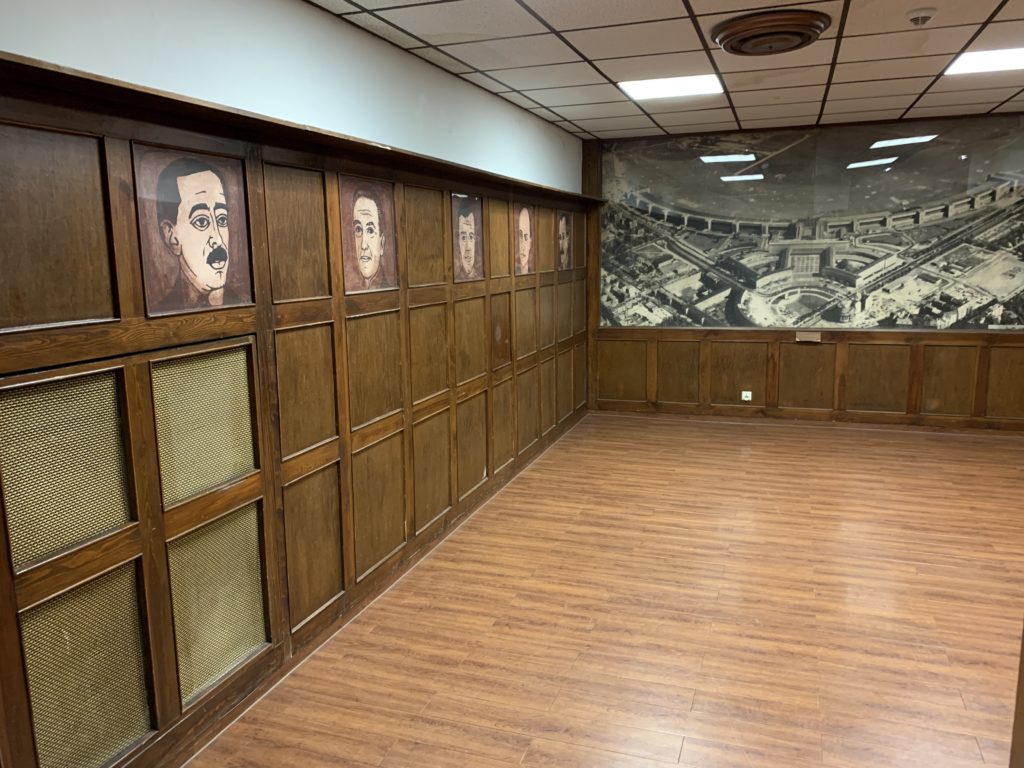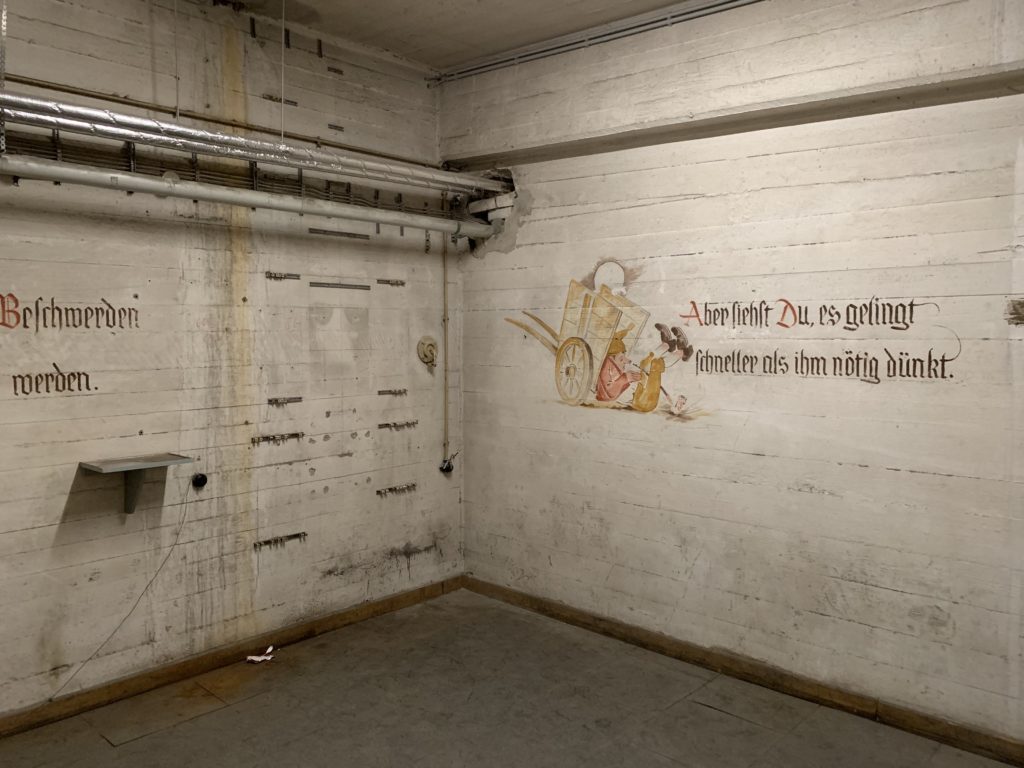So, continuing with my week in Berlin, the next day when I had a long lunch I decided to venture even further out into the former East Berlin, and visit the main prison of the Stasi which is now a museum. The Gedenkstätte Hohenschönhausen is a museum on what was once the site of the Stati’s most notorious prison. Tours are relatively infrequent – at least public ones – and when I called I couldn’t get anyone who understood English…but based on my limited German there would be a tour today, so I made the long trek by tram out to Lichtenberg.
Fortunately, the tour happened right on schedule, but unfortunately, our guide would be a young Czech lady. While she was excellent, the majority of guides are former prisoners, and it would have been much more interesting to hear their perspective.
We started with a 25 minute movie which was a fantastic introduction to the complex, and then it was off to the original prison building, and its cells. At the time, like Robben Island or other former prisons, it was just another site, but looking back today it’s much easier for me to see the terror in the site…even decades later.
After touring the old cellblock, it was out into the main yard to walk to the “newer” building which was built once it was clear the DDR was going to be a thing, and the Cold War was going to split Germany for quite some time.
Inside the new cellblock, the door to a cell. Note the wire running over the top of the door? See how to the right of the door there is what looks like connectors? This is because guards were unarmed, and if shit went down they could loosely yank on the wire, which would pull the connectors apart, and set off an alarm. The entire complex was wired this way.
Inside of an interrogation room. Prisoners were never interrogated right away – they waited several days or weeks until they were sufficiently disoriented first and ready to talk.
Metal grates on the stairwells between floors.
Barbed wire on the ends of the complex.
Another day, I took the U-Bahn out to Friedrichshain, a now trendy and gentrifying part of former East Berlin, and decided to go for a long walk back to my hotel to appreciate how the city was laid out. With a subway, it’s often hard to appreciate how all the parts of a city fit together, so I figured this would be a great way to do it – plus – I love long urban walks. A very colourful street in Friedrichshain:
Funky mural – not entirely sure what it’s supposed to depict:
Even the Germans aren’t big fans of the Cheeto in Chief:
A short way through the walk, I was hungry and cold, so stopped into Ostbahnhof which for some reason I really like, and had my favourite German snack….a Bretzelsnack and caramel macchiato – perfect on a cold winter day.
Crossing the river and looking west towards Alexanderplatz:
St. Michael’s Church:
One of the best street names in the world – under water street! Wonder if Spongebob Squarepants is around…
…and after the long walk, nearly 12km, I rewarded myself with a currywürst and beer. I mean, when in Berlin…
One of the weirder parts of Berlinale, on top of all the fru fru people in my hotel in silk scarves, was the pop-up make-up booth in the middle of Potsdamer Platz. I very tempted to poke my head in and see if I could get my makeup did…
Another day, I went for a long walk through the Tiergarten. Seeing the Siegessäule brought back memories of U2, and I think I was humming “Stay – Faraway So Close” for the rest of the trip.
Just the bang…and the clatter…as an angel…hits the ground.
Another evening, walking back to my hotel, I stopped by the Memorial to the Murdered Jews of Europe. Very moving, lots of slabs of concrete, and catching it at sunset made it extra-reflective.
Walking through the memorial. Unfortunately, lots of young people acting disrespectfully – I really hope the future holds better than a lot of these kids were displaying, or history will be doomed to repeat itself.
From there, I wandered back to the Brandenburger Tor, which looked awesome with the sun setting behind it:
Apparently, there were multiple protests/demonstrations going on….including this colourful character…the “Kaiser”
A short video of his…interesting…spiel…
One final walk on my last night in Berlin, and the L’Oreal people were still out in Potsdamer Platz doing makeup…incredibly odd.
Last morning, before heading to the airport, decided to go for one final long walk through the Tiergarten. Pond partially frozen over:
Statue of Albert Lortzing, a German composer:
I love how this picture captured the reflection of the trees on the partially-frozen pond:
One final stop by the Siegessäule. I was going to climb to the top, but was running short on time to get to the airport, so decided to skip it so I’d have an “excuse” to come back again.
…and with that, my week in Berlin was over. Definitely confirmed my feeling that it’s an amazing world-class city, and somewhere I’d love the opportunity to live. So if you know anyone there who’s looking to hire… 😉
Next up, off to Norway!
